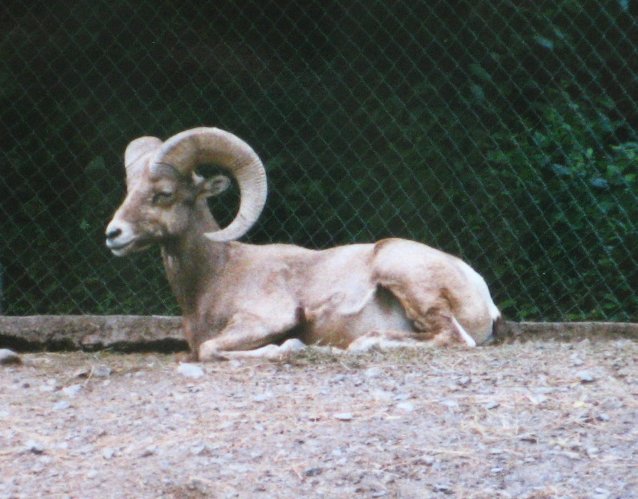

Ovis canadensis
The Bighorn Sheep used to be widespread throughout the western United States, Canada, and Northern Mexico. By now its habitat has been reduced to areas where small bands are protected by inaccessible surroundings or by refuges. These places are in Nevada, California, Texas and Mexico.
The horn size in males is a symbol of rank. Prior to the mating season or “rut”, the rams attempt to establish a dominance hierarchy that determines access to ewes for mating. It is at this time that males have head butting contests, clashing their horns, in “battles” that can last up to 24 hours.
Females also have horns, but of small size. They have their babies one baby a year, in a cliff that’s hard to access. Lambs are woolly and white and have little horns. They can walk and climb by the first day.
The Bighorn Sheep have a complex 9-stage digestive process that allows them to maximize removal of nutrients from food.
The picture of this Bighorn Sheep was taken at the zoo of Syracuse, NY.
Genus Ovis
Subfamily Caprinae
Family Bovidae
Order Artiodactyla
Subclass Eutheria
Class Mammalia
Subphylum Vertebrata
Phylum Chordata
Kingdom Animalia
Life on Earth
Index